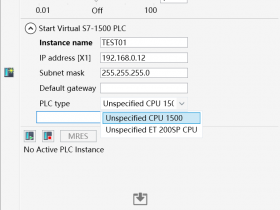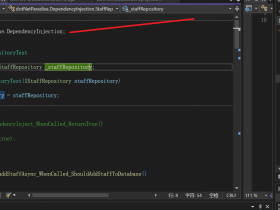- A+
所属分类:.NET技术
WinUI3下TitleBar的自定义
对于Windows软件开发者来说重写标题栏样式是一个很重要的事情,在WPF阶段很多人写出来性能很差的窗口,而且为了适配Win11系统的Snaplayout后性能就更差了,这篇是写WinUI3下提供的重写TitleBar的方式;
1、修改文本
public MainWindow() { this.InitializeComponent(); Title = "Duwenlong learn App Title"; } 可以修改默认标题栏显示文本;但是无法自定义其他内容;所有操作都请在InitializeComponent方法后执行,不然会报错;
public MainWindow() { this.InitializeComponent(); // Hide default title bar. ExtendsContentIntoTitleBar = true; } 修改后我们有完整的区域用看显示内容,只是目前还比较丑而且标题栏部分不支持拖动;
2、完全自定义
通过调用 Window.SetTitleBar 方法并传入定义拖动区域的 UIElement 来指定拖动区域。
1、标题栏内容和拖动区域
代码如下:
<Window x:Class="TitleBarCustomizationDemo.MainWindow" xmlns="http://schemas.microsoft.com/winfx/2006/xaml/presentation" xmlns:x="http://schemas.microsoft.com/winfx/2006/xaml" xmlns:local="using:TitleBarCustomizationDemo" xmlns:d="http://schemas.microsoft.com/expression/blend/2008" xmlns:mc="http://schemas.openxmlformats.org/markup-compatibility/2006" mc:Ignorable="d"> <Grid> <Grid.RowDefinitions> <RowDefinition Height="Auto"/> <RowDefinition Height="*"/> </Grid.RowDefinitions> <Grid x:Name="AppTitleBar"> <TextBlock x:Name="AppTitleTextBlock" Text="Duwenlong learn Now App Title" TextWrapping="NoWrap" Style="{StaticResource CaptionTextBlockStyle}" VerticalAlignment="Center" Margin="28,6,0,6"/> </Grid> </Grid> </Window> public MainWindow() { this.InitializeComponent(); ExtendsContentIntoTitleBar = true; SetTitleBar(AppTitleBar); } 2、交互式内容
我们可以放置一些不影响用户的交互式按钮
使用XAML的嵌套语法尝试放置一些内容,我放置了一个textblock,用于在标题栏显示一个消息;
<Window x:Class="TitleBarCustomizationDemo.MainWindow" xmlns="http://schemas.microsoft.com/winfx/2006/xaml/presentation" xmlns:x="http://schemas.microsoft.com/winfx/2006/xaml" xmlns:local="using:TitleBarCustomizationDemo" xmlns:d="http://schemas.microsoft.com/expression/blend/2008" xmlns:mc="http://schemas.openxmlformats.org/markup-compatibility/2006" mc:Ignorable="d"> <Grid> <Grid.RowDefinitions> <RowDefinition Height="Auto"/> <RowDefinition Height="*"/> </Grid.RowDefinitions> <Grid x:Name="AppTitleBar" > <TextBlock x:Name="AppTitleTextBlock" Text="Duwenlong learn Now App Title" TextWrapping="NoWrap" Margin="28,6,0,6" Style="{StaticResource CaptionTextBlockStyle}" VerticalAlignment="Center" /> <TextBlock Margin="28,6,0,6" Text="1 problem to be fixed" Width="220"/> </Grid> </Grid> </Window> 4、系统标题按钮的颜色和透明度
将应用内容扩展到标题栏区域时,可以使标题按钮的背景透明,我默认设置了WindowCaptionBackground为透明色
<Application x:Class="TitleBarCustomizationDemo.App" xmlns="http://schemas.microsoft.com/winfx/2006/xaml/presentation" xmlns:x="http://schemas.microsoft.com/winfx/2006/xaml" xmlns:local="using:TitleBarCustomizationDemo"> <Application.Resources> <ResourceDictionary> <ResourceDictionary.MergedDictionaries> <XamlControlsResources xmlns="using:Microsoft.UI.Xaml.Controls" /> <!-- Other merged dictionaries here --> </ResourceDictionary.MergedDictionaries> <!-- Other app resources here --> <SolidColorBrush x:Key="WindowCaptionBackground">Transparent</SolidColorBrush> <SolidColorBrush x:Key="WindowCaptionBackgroundDisabled">LightGreen</SolidColorBrush> <SolidColorBrush x:Key="WindowCaptionForeground">Red</SolidColorBrush> <SolidColorBrush x:Key="WindowCaptionForegroundDisabled">Pink</SolidColorBrush> </ResourceDictionary> </Application.Resources> </Application> 5、当窗口处于非活动状态时,调暗标题栏
<Application x:Class="TitleBarCustomizationDemo.App" xmlns="http://schemas.microsoft.com/winfx/2006/xaml/presentation" xmlns:x="http://schemas.microsoft.com/winfx/2006/xaml" xmlns:local="using:TitleBarCustomizationDemo"> <Application.Resources> <ResourceDictionary> <ResourceDictionary.MergedDictionaries> <XamlControlsResources xmlns="using:Microsoft.UI.Xaml.Controls" /> <!-- Other merged dictionaries here --> </ResourceDictionary.MergedDictionaries> <!-- Other app resources here --> <!-- <SolidColorBrush x:Key="WindowCaptionBackground">Transparent</SolidColorBrush> --> <SolidColorBrush x:Key="WindowCaptionBackground">Green</SolidColorBrush> <SolidColorBrush x:Key="WindowCaptionBackgroundDisabled">LightGreen</SolidColorBrush> <SolidColorBrush x:Key="WindowCaptionForeground">Red</SolidColorBrush> <SolidColorBrush x:Key="WindowCaptionForegroundDisabled">Pink</SolidColorBrush> </ResourceDictionary> </Application.Resources> </Application> using Microsoft.UI.Xaml; using Microsoft.UI.Xaml.Controls; using Microsoft.UI.Xaml.Controls.Primitives; using Microsoft.UI.Xaml.Data; using Microsoft.UI.Xaml.Input; using Microsoft.UI.Xaml.Media; using Microsoft.UI.Xaml.Navigation; using System; using System.Collections.Generic; using System.IO; using System.Linq; using System.Runtime.InteropServices.WindowsRuntime; using Windows.Foundation; using Windows.Foundation.Collections; // To learn more about WinUI, the WinUI project structure, // and more about our project templates, see: http://aka.ms/winui-project-info. namespace TitleBarCustomizationDemo { /// <summary> /// An empty window that can be used on its own or navigated to within a Frame. /// </summary> public sealed partial class MainWindow : Window { public MainWindow() { this.InitializeComponent(); ExtendsContentIntoTitleBar = true; SetTitleBar(AppTitleBar); Activated += MainWindow_Activated; } private void MainWindow_Activated(object sender, WindowActivatedEventArgs args) { if (args.WindowActivationState == WindowActivationState.Deactivated) { AppTitleTextBlock.Foreground = (SolidColorBrush)App.Current.Resources["WindowCaptionForegroundDisabled"]; } else { AppTitleTextBlock.Foreground = (SolidColorBrush)App.Current.Resources["WindowCaptionForeground"]; } } } } 6、重置标题栏
可以在应用运行时调用 SetTitleBar 切换到新的标题栏元素。或者恢复为默认;
<Window x:Class="TitleBarCustomizationDemo.MainWindow" xmlns="http://schemas.microsoft.com/winfx/2006/xaml/presentation" xmlns:x="http://schemas.microsoft.com/winfx/2006/xaml" xmlns:local="using:TitleBarCustomizationDemo" xmlns:d="http://schemas.microsoft.com/expression/blend/2008" xmlns:mc="http://schemas.openxmlformats.org/markup-compatibility/2006" mc:Ignorable="d"> <Grid> <Grid.RowDefinitions> <RowDefinition Height="Auto"/> <RowDefinition Height="*"/> </Grid.RowDefinitions> <Grid x:Name="AppTitleBar" > <TextBlock x:Name="AppTitleTextBlock" Text="Duwenlong learn Now App Title" TextWrapping="NoWrap" Margin="28,6,0,6" Style="{StaticResource CaptionTextBlockStyle}" VerticalAlignment="Center" /> <TextBlock Margin="28,6,0,6" Text="1 problem to be fixed" Width="220"/> </Grid> <Button Grid.Row="1" Content="Click Me" Click="Button_Click"/> </Grid> </Window> private void Button_Click(object sender, RoutedEventArgs e) { SetTitleBar(null); ExtendsContentIntoTitleBar = false; } 因为使用的是Win10机器,图床又挂了所以不贴图了,Win11下会很好看。




